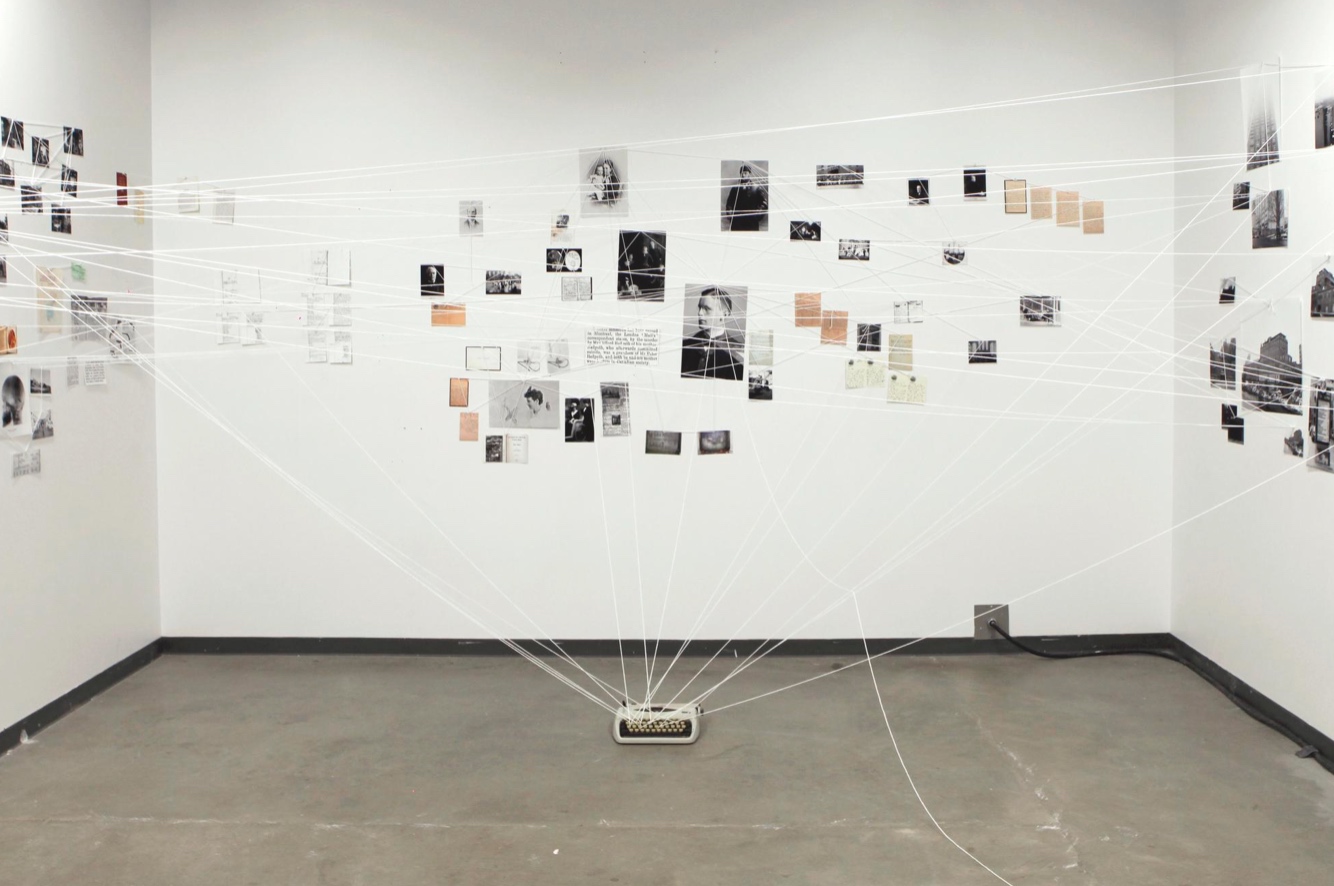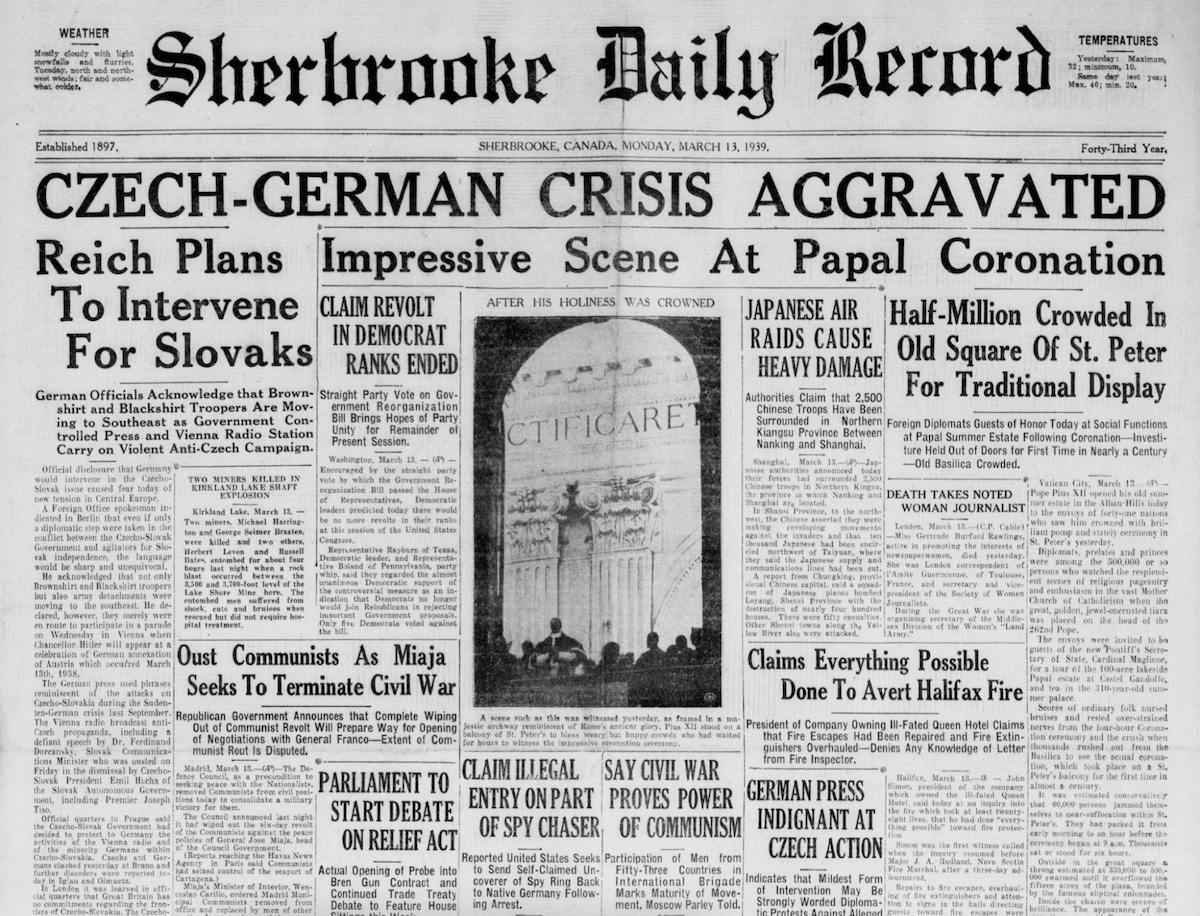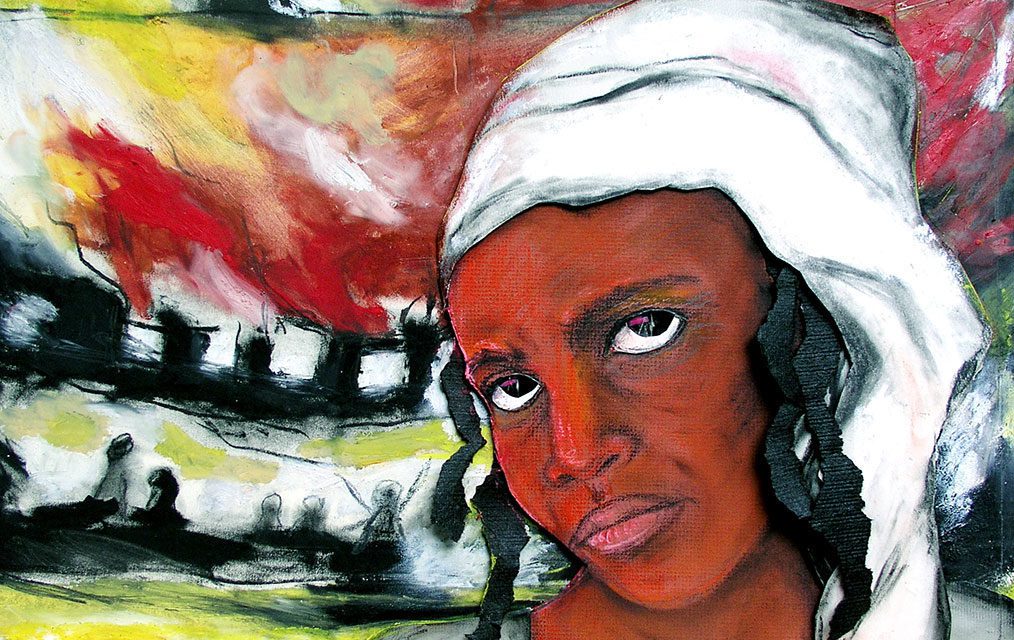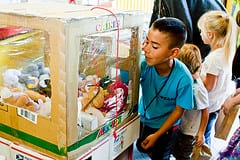En français (partie 1, partie 2)
It’s a mystery to me, how and when I first stumbled onto the Great Unsolved Mysteries in Canadian History website. But not why I think back on this great discovery so often in my planning, teaching and research work.
It seems a simple idea at first: to “solve the mystery”, to research and learn more about one captivating individual, or one curious event in the past; to delve into a controversial story that has been partially lost in time, and for which there are so many things undecided and unsure. But it is so much more than that.
Without having explored much further than the first mystery I viewed on the Mysteries website, (Torture and Truth: Angélique and the Burning of Montreal) I remembered a favourite Barthes quote from my university days.
There are said to be certain Buddhists whose ascetic practices enable them to see a whole landscape in a bean. –Roland Barthes, E/Z
At the time, I had always been fascinated by the notion of gazing through these personal and isolated portals onto the whole of a historical time period. To visit a period through their eyes is to have eyes to see everything the way it was, or so I thought.
It’s only now when rereading that passage from Barthes that I see how he was actually referring to and criticizing typical practices of academics. Barthe was instead objecting to a process similar to historians (well “the first analysts of narrative”, for him) who would search inside smaller examples (of literary works, for example) for “models”, then after extracting those models would create common ones that are effectively a generalization that is then applied to just about everything.
The Canadian Mysteries project is not about that at all. As you will see, it’s quite the opposite. Let’s start with what students will be doing: “The project builds on the new ‘document-centred inquiry’ and ‘active learning’ pedagogical thinking. The beauty of this format is that students have to make their research strategy and critical-thinking skills apparent as they defend their theory.”
If you read my last article on Active In-Class History, or Avoiding the Issue of ChatGPT, you know why the first part of that description appeals to me! But look at the last two words: “their theory”. This is what happens on the Mysteries site. Students are not looking inside and at a form of the past to find something that we are asking them to find. They are not responding to a guiding question that I or another teacher have given them. (Mea Culpa on that one, and two.)
In fact, available historical “interpretations” of these events are hidden from the public and only accessible to teachers upon request.
We need your help!

Mind Astray / Gone Past by Alexandre Gosselin. “Uncovering archives and giving them meaning through investigation and visual story-telling.” Photo project on the Redpath Mansion mystery.
The Mysteries website’s first page asks students to “help”. They have several “cold cases” to solve — “old crimes in which the guilty ones walked, and even more insidious crimes where a whole village may have been complicit.”
Indeed, the list of mysteries presented covers key themes we find in our own history programs: “slavery, Indigenous issues, disease, vigilante rule, terrorism, religious dissent, early settlement, care of the handicapped, and family violence are only a few.” And in fact, they do reference curriculum connections throughout the website.
However, the stories are about people (mostly), and sometimes places (like Vineland!) that have been lost. And the events the mysteries explore are particular to a certain, often very brief, instance in time, to a very specific place, even down to a neighbourhood, and often to a very isolated event that occurred there.
Just a few other examples of many Mysteries that are highlighted on the site: Aurore! The Mystery of the Martyred Child; Jerome: The Mystery Man of Baie Sainte-Marie; The Redpath Mansion Mystery; Death on a Painted Lake: The Tom Thomson Tragedy; Who Discovered the Klondike Gold?; Nobody Knows Him: Lhatŝ’aŝʔin and the Chilcotin War; Explosion on the Kettle Valley Line: The Death of Peter Verigin
These are not at all the models Barthe referred to; they are, more often than not, the exceptions. These are the kinds of stories you discover when researching (a little more on that later) and let yourself, and let your students!, go down the rabbit hole in the light of their own discoveries.
So does this kind of research – using primary documents, letters and photos and articles of the times to solve a mystery – also provide us with useful small pieces of a time period? Does it help us make conclusions about social phenomena, or does it break those conclusions apart? In other words, are these methods useful for our students learning within the contexts of our programs?
Microhistory. Let’s sweat about the small things!

Photo by Paul Rombough of ‘LA FRESQUE DES PATRIOTES” by Mural Creation in St. Eustache. (Local to me!)
Eventually, I discovered that there was actually a name for this type of history. What else but Microhistory!
It even has its own origin story, apparently developed by Italians in the 1970s (ex. Carlo Ginzburg), and it has been elaborated on and explored through several studies and projects (ex. Microhistory Network). I would say, though, that the basic notion is one that exists and always has existed quite naturally, in the way individuals, families, and maybe even villages collect and try to remember events.
Formalized though, as a historical approach, it can still diligently “begin with a research question or a set of questions.” I was slightly surprised by this because for me my own focus on the story like Angélique’s began with pure fascination and even emotional concern. But I was also relieved since it echoes the way we always start our own student topic pages and document collections with essential questions, ones that have flowed forward from one historical topic or even time period to another, but more to the point, often with sub-questions that we have discovered ourselves in our own research preparing the page.
Admittedly though, our work for students still tends to expand out into larger topics, describing so-called “national narratives” and the key themes and issues of the program. The thing I personally like about a Microhistory is that it continues to dig down into each [seeminging] more isolated story: “It’s the second step that distinguishes microanalysis: the reduction of the scale of analysis, sometimes drastically.” (Source)
A few more examples, these ones from the MicroWorlds Lab website:
The object of a great microstudy might be a soldier’s return to his village, a bloody murder on the steps of a theater, a midwife’s diary, a dying woman’s conversations, the secret life of a globe-trotting religious convert, the diary of a Confucian doctor, an artist’s riveting musical performance, or the sightings of a ghost on Halloween.
My first impression was that microhistorians were simply more like active “local historians” who were digging through the village archives to find exciting and fun stories to help confirm local identities. Or, maybe they were like “public historians” applying their findings to current issues, or distributing them through museums and visits so that people can connect with the place they live. But in fact, the approach emerged as a direct critique of the way typical historical methods make generalizations that actually don’t hold up when they are “tested against the concrete reality of the small-scale life they claim to explain.” (Source) Microhistorians who closely examine individual relationships – within larger social settings that necessarily occur during events, social phenomena, cultural development, political changes, etc. – stress that these relationships differ from the ‘larger norms’. I read this to say that the larger norms we are studying in our programs might be actually distorting past realities at the same time as they are trying to generalize things to make them intelligible and universally applicable.
The reduced scale of microhistory can be particularly useful not only in documenting variations within general trends, and insights into the experience of the average, but also … in bringing to the historian’s view those activities, beliefs, and issues that are difficult to see, let alone understand when the scope of enquiry is wider, more generalized, or depersonalized. (Source)
You might also have noticed from the examples above that microhistorians often focus on exceptions to the rule, on individuals that stand out, and more often than not on individuals who have “caught the attention of the authorities…” thus essentially illustrating where power lies and how it works. But while the first examples of microhistory that had caught my eye on the Mysteries site might have been of this nature, for me I continued to see these kinds of “fragmentations, contradictions and a plurality of viewpoints” (Source) pretty much every time I actually looked a bit closer at a time period or event; i.e. when I had the tools and resources available to begin to look much closer, at actual source documents and, even better, at “first-hand accounts”. A resource collection and learning strategy I developed recently illustrates this perfectly.
Not who cares, but who cared?

Sherbrooke daily record, lundi 13 mars 1939 | BAnQ numérique (Copyright: Eastern Township Publishing. Educational Use)
A big part of our history courses is: What caused this and who caused that? Ours is a science that expects students to make “causal connections” between events over time, or to “indicate the facts that explain phenomena or that result from a phenomenon”. Recently I was working on the World War Two section of our site, developing resources that described the situation in Europe before WW2 started (Doc. Collection 1), and then more specifically a resource package to help students choose then investigate one cause from a list of causes of the War (Doc. Collection 2). My suggested strategy (in a separate collaborative student organizer) then asks students to go back in time and discover how that causal event was portrayed in local newspapers of the times, and whether or not people were aware of its seriousness and eventual significance, or even if people even cared.
That strategy, that direction of questioning, came more out of what I found than what I had intended. I gathered many newspaper articles from local Quebec papers using the BANQ site, mostly finding English references in ones like the Sherbrooke Record. But when looking into the way the articles were presented and at what other articles were available in these same newspapers of the mid to late 1930s, I realized how much else was going on in these people’s lives. I saw how key events often got buried, in stories of other events that we don’t really study or that in some cases have been mostly forgotten.
In this case, the students’ quests weren’t going to reveal the mystery of a controversial person or event. They would instead reveal something equally fascinating: the lost concerns of a particular local group, as that group lived through extremely important moments in our own history, which possibly were less important moments for them than we ever imagined.
Of Local Histories, Local Mysteries and Lost Causes
In an earlier article (Learning in Place: Working towards a local history learning toolkit) a few colleagues and I described our process and intentions while building a Local History Toolkit of sorts. Through an empathetic examination of people and places (i.e. questioning and research, but also visits, interviews, etc.) students can better understand their community and understand themselves. And given the careful placement of such small and big adventures, students can also reflect on larger national narratives, and on the content in our provincial History courses, all through those local lenses and perspectives.
A few more examples, this time from the Mystery Quests subsection of the larger site:|
The Trial of Tshuanahusset; The Chilcotin War; Is Tshuanahusset Guilty?; Was Herbert Norman a Spy?; The Real Vinland?
Uncovering the mysteries of how people lived and what people believed, and perhaps especially of how people rebelled and rejected authority and power, can also be a strategy you could use locally. If you are lucky enough to live close to a community for which one of the mysteries, or the actual mystery quests units, have been written, why not use those topics and strategies to focus on a time period in the program you are teaching? And if not, take a look at their general approach, and especially the tools they offer that might help you (or your students) to create their own mystery quests or investigative challenges.
Truth be told, my whole goal in writing this article and in building the resources I do is to offer opportunities for students to have fun. With approaches like this, no two student experiences would be the same. The historical and investigative processes become their own. Let them wonder about and wander into the times (and places and people) they are learning about. What they discover might even surprise you; for the lost causes, of who we are and what we have become, might also be the most fascinating and compelling causes of all.
Key sites and references:
Great Unsolved Mysteries in Canadian History
Mystery Quests: Units for teachers and students!
Roland Barthes, E/Z
History as Experiment: Microhistory and Environmental History (R. W. SANDWELL)
What is Microhistory? – The MicroWorlds Lab
What Is Microhistory? | History News Network
The Web Gives and It Takes Away
Explore Concordia: microhistory
Microhistory.org
Literary History as Microhistory Heather Murray
Introduction: Seeing the World like a Microhistorian* | Past & Present |
Microhistory Network – History under a microscope
Local History – LEARN
Feature image credits:
Illustration Annie Beaugrand-Champagne 2006 (Used with permission)
Reposted versions:
This post was re-posted on the Canadian Historical Association, in two parts, here and here.
Le Société historique du Canada ont également eu la gentillesse de le traduire cette article en français. Visitez partie 1 et partie 2.





